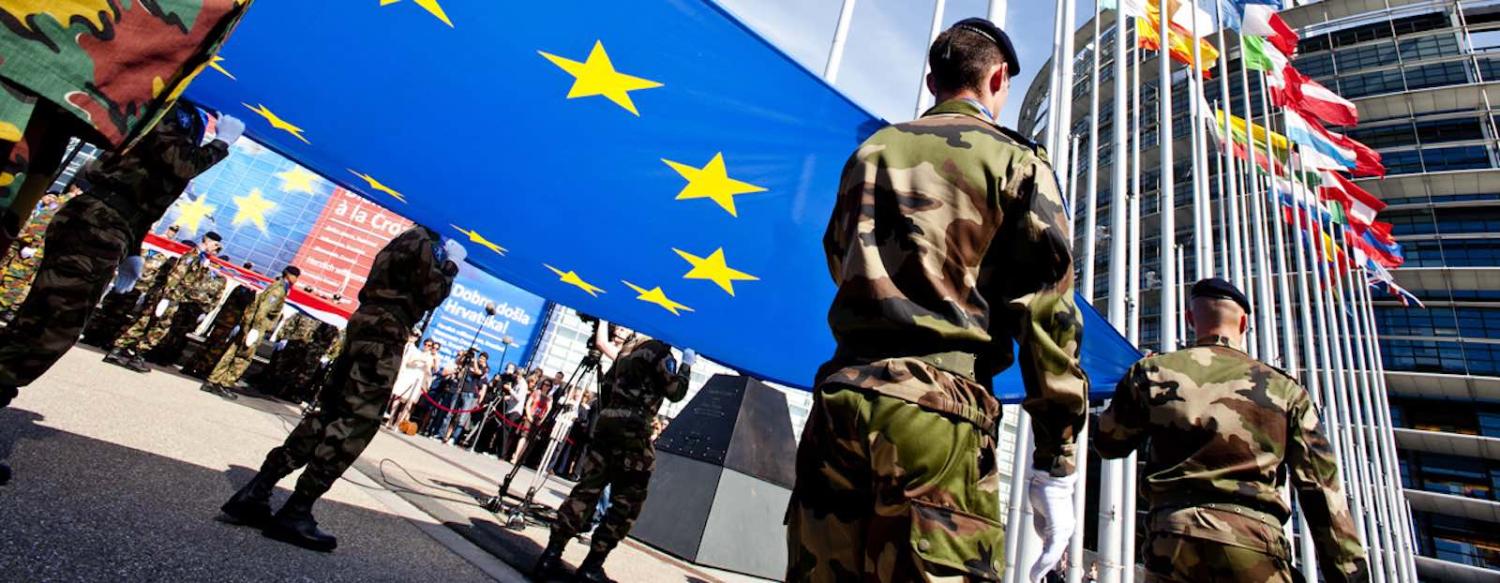The headline “Armed force of 10,000 to patrol borders” recently featured from the European Union about Frontex is not quite what it appears to be. It does not herald the nucleus of an European Army, but then again, the EII might.
Confused? You are not the only one “lost in EU abbreviations”. Everybody is, including Brussels-based specialists working every day on questions of European security.
EU slang, difficult at any time in any area, becomes positively impenetrable with regard to security. This reflects the fact that security and defence matters count among the most jealously guarded prerogatives of national states, which are particularly reluctant to cede sovereignty in this core area.
The waste of having over 20 different national defence systems within the EU, including army, navy, and airforce, their procurement and their development, is gigantic.
And despite an evident and growing need to complement political and economic union with the necessary muscle to defend and promote such union, the many attempts to build supranational defence, let alone a European army, have ended in plans, concepts, strategic games and the like, with only limited military substance.
Having had, so far, a fairly well functioning military alliance, NATO, existing (almost) in parallel, has not helped either.
If not replaced as an expression, Frontex, short for frontiers exterieures, the agency tasked with the protection of the EU’s external borders has actually been given new substance as the European Border and Coast Guard Agency since the migration crisis of 2015. The 10,000 personnel referred to initially should bolster this claim.
As border police, Frontex has traditionally been within the (European) Area of Freedom, Security and Justice (AFSJ), the umbrella over among other things “Schengen”, not under the realm of EU’s Common Foreign and Security Policy (CSFP). This sounds arcane, but is important for intergovernmental policy making, which is still the norm in many areas of EU-cooperation.
Frontex in its new guise will move to the nexus between Justice and Foreign Affairs, but this is still being discussed, administered and developed, both in capitals and in Brussels, by Justice related structures, not those specifically for Defence within CSFP, the Common Security and Defence Policy, or CSDP (more abbreviations!).
The latter is the vessel for multiple European military operations as well as civil missions with security related content. Geographically they cover crisis spots from sub-Saharan Africa over the Maghreb to the Balkans and the Ukraine. Current and past such endeavours number almost 40 – each, of course, with its own abbreviation. But they are one-shot affairs, cobbled together ad hoc from national security means, either civil or military.
French President Emmanuel Macron is the latest in a number of convinced Europeans who explicitly wants to change that. PESCO (Permanent Structured Cooperation) was his first attempt to create a unified military structure, ready for action without prior negotiations with each participant EU member country. Paradoxically enough, PESCO has turned out too much of a success for its own good.
Intended by the French as an intra-EU coalition of the willing, all members joined, except brexiting Britain, Denmark and Malta. Currently nationalist leaning countries such as Poland and Hungary clearly aim to block, rather than to further supranational defence. That is true at least where the one part of PESCO is concerned dedicated to common military missions.
Yet a second part obligates each member to set mandatory targets for its national defence budget, security related research and common armaments policy. According to Brussels insiders, here’s where the importance of this scheme lies. The waste of having over 20 different national defence systems within the EU, including army, navy, and airforce, their procurement and their development, is gigantic. It is also a high hurdle when cooperation under military duress is needed. PESCO, and its de-facto secretariat, the European Defence Agency, could mean a step forward in this thorny area.
The most promising push for more European military muscle is Macron’s recently unveiled European Intervention Initiative (variously abbreviated to EII, E2I and EI2). EII is open also to Non-EU member countries – Non-EU NATO members such as Norway and Turkey, as well as former neutrals unwilling, mostly for historic reasons, to join NATO – and is to be used in emergency situations as a rapid intervention force.
Already signed up are the three big European military powers, Britain, France and Germany, as well as Spain, Portugal, the Netherlands, Belgium, Denmark and Estonia. EII might be the way to keep the UK integrated into European defence after Brexit.
This would also be the way out of a conundrum that has dogged European security from the beginning: the parallelism with NATO.
Not only, but mainly, London – in line with Washington – has always blocked serious European defence with the “duplication objection”: don’t do what NATO does better. With the UK out of the EU and thus unable to interfere in its political decision making on the highest level, EII would help both sides. The EU with its own integrated defence and London, mindful of the Trumpian question marks hanging over NATO, to stay involved with European defence without being an EU member.

